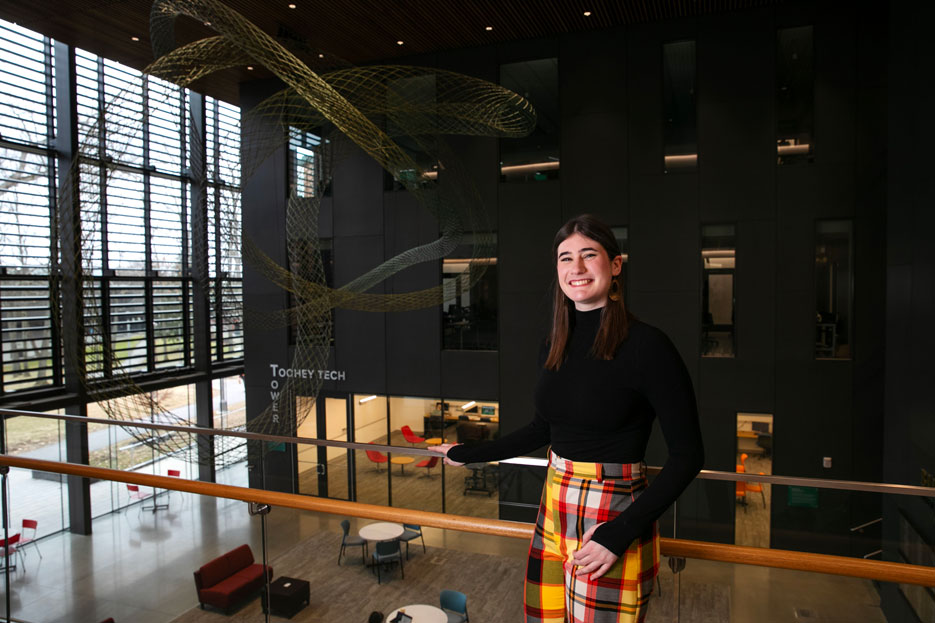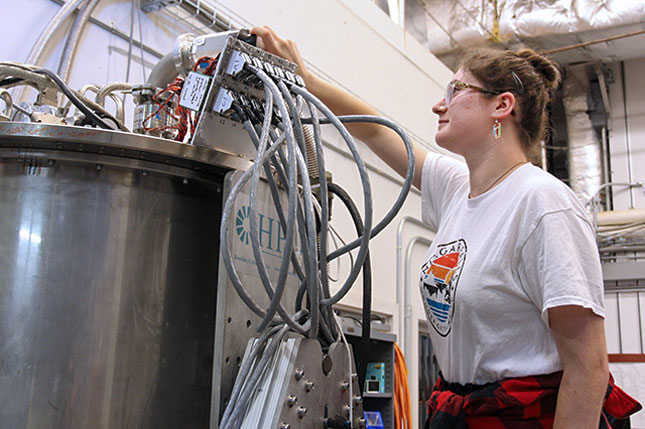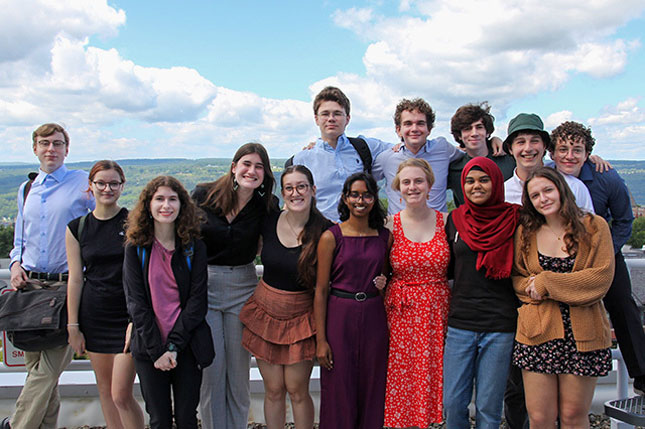Gaining momentum through the Skidmore Physics Department

When I applied to college, I had a lot of potential majors in mind but no idea which path to choose. On one hand, English and history classes had been my favorites in high school. But on the other hand, I had a lifelong passion for science, and I had recently discovered my love of physics. But I wasn't worried — I knew I’d have an amazing experience at Skidmore no matter what I picked.
During my first year, I took classes in English, sociology, history, math, physics, and dance — and honestly, I loved all of them. However, physics was a new and exciting challenge for me.
All the students and professors I met at Skidmore were so positive and encouraging. Before college, I never would have thought I could find success in physics, and I had no idea what post-graduation opportunities a physics degree could offer. However, all the faculty were so supportive, and they helped me build my confidence as a scientist. So when it came time to choose a major, I picked physics!
One of my favorite parts of the Skidmore Physics Department is the community I’ve found through the Physics Peer Academic Coaching (PAC) program.
PAC is a student-run accountability and tutoring group that meets every weeknight from 7 to 9, and it is the backbone of Skidmore physics. While the main goal of this program is to offer support for the introductory and intermediate courses in the major, Physics PAC has also just become a communal study space for all physics students. Upperclassmen and underclassmen come every weeknight to work, chat, and study. It is also a space where we discuss what opportunities are possible outside of our classes as we plan for our futures.
I first heard about Research Experiences for Undergraduates (REUs) while at PAC my first year. These programs are designed to give students who attend smaller schools like Skidmore access to R1 research facilities and show them what doctoral programs are like. They are sponsored by the National Science Foundation and take place at universities and labs all over the country. Skidmore students are the ideal candidates for these positions because we are highly motivated students from schools where research is not the top priority of the college.
This past summer, I was selected to participate in an REU at the Cornell Laboratory for Accelerator Sciences (CLASSE) at Cornell University. I was assigned to work with the Tomographic Ionized-carbon Mapping Experiment (TIME), a telescope instrument currently being designed and tested at Cornell. Eventually, TIME will be installed at the Arizona Radio Observatory and will be used to image ancient galaxies. Specifically, TIME measures the cosmic emissions from a specific time period called the Epoch of Reionization.

In this photo, I'm making adjustments to the cryostat in the Cornell Laboratory for Accelerator Sciences at Cornell University.
My job for the summer was to combine existing code from the project with new code I wrote to make a file that could analyze the performance of the instrument’s sensors during testing. I also worked to make the code modular, so we could easily analyze each facet of the sensor’s performance by itself or all together at once. I had never done a serious coding project like this before, but my advisor, Dr. Abigail Crites, was an amazing mentor. She showed me how to read and debug the existing code and helped me split my project into manageable steps.
As I was coding, we were also testing new hardware for the instrument. The type of sensor that TIME uses is called a bolometer. Basically, it acts like a thermometer — it heats up as the emissions from galaxies hit it. Then, by looking at how much the temperature changes, we can see how intense the emission was and assign it an intensity value. This is how we tell when the galaxy whose emissions we are measuring was first formed. To see this temperature difference, all the machinery is kept inside on a cryostat, which keeps the sensors a quarter of a degree above absolute zero!
My program covered my transportation to and from the lab, housing, and a stipend for my work. This meant I was living just down the hall from the other college students in the program! It was amazing to meet other students from across the country and hear about their experiences as physics majors. We all became fast friends and spent a lot of our free time together exploring Ithaca and the Finger Lakes region.

While participating in the National Science Foundation-sponsored program at the Cornell Laboratory for Accelerator Sciences, I met other students from across the country and learned about their experiences as physics majors at other schools.
Some people in the group had been planning for a Ph.D. for years, while others (like me) were just starting to see it as a possibility.
I also realized how lucky I was to have the support of the close-knit Skidmore Physics Department. Here at Skidmore, I have multiple professors who know me well enough to write me letters of recommendation and speak to my skills. I have multiple professors who can advise me on jobs to pick and classes to take. And all my professors actively believe in my ability to succeed in the field. That is not a universal experience at all schools.
I was fascinated by every aspect of my summer project — specifically the physics instrumentation work I did. And I got to learn all about the work my peers were doing and speak with their mentors. By the end of the summer, the idea of graduate school became less nebulous and more tangible.
I am now able to put words to the types of projects and work I want to pursue, and I gained valuable experience and knowledge in the field that I am using to apply to new programs for this upcoming summer.